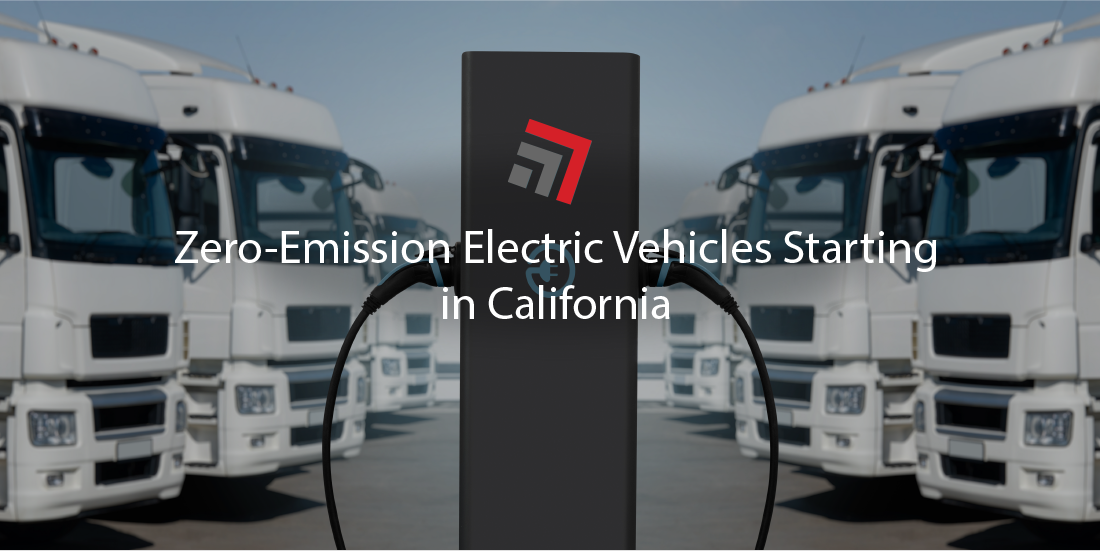Every year, millions of tons of goods pass through the ports of California, connecting American consumers and foreign companies. However, all of this activity has caused significant convers over the health of pedestrians and residents of the state. Current regulations set forth by California’s air regulator are requiring considerable alterations to this supply chain in order to address climate change and protect the health of people near the ports.
2035: Zero-Emission Trucks Only
In California, all drayage vehicles such as large trucks used to move cargo between ports, train yards, and distribution centers must become zero-emission by the year 2035. Every trucking or shipping business will need to buy an electric truck that is powered by batteries or hydrogen fuel cells in 2024.
These rules at California’s ports are a small sample of the more significant adjustments required on a national and international level to combat climate change. Additionally, by 2035, California intends to outlaw consumer sales of gas-powered vehicles. The majority-minority communities that live and work in those areas and are disproportionately affected by health issues such as cancer, heart disease, and asthma will benefit from the improved air quality around the state’s ports and rail yards, which will be made possible by the switch from diesel to electric-powered drayage trucks. By 2050, these measures, according to official projections, might avert 5,500 deaths from heart and lung diseases.
The industry for electric heavy trucks is anticipated to flourish as a result of the new California regulations. Companies involved in the construction of vehicles, batteries, and charging stations are flourishing thanks to the backing of the fifth-largest economy in the world and forward-thinking environmental regulators. Thirteen states have pledged to adopt standards for clean trucks that are equivalent to or similar to those of California.
Concerns Over New California Laws
The laws, in the opinion of some stakeholders, are developing too quickly, especially small business owners that transport a sizable portion of California’s containerized goods. They contend that there are significant obstacles, including the infrastructure, the accessibility of charging stations, and the price of electric trucks. The financial burden persists despite state and federal subsidies as well as tax credits that help lower the price of electric trucks. Additionally, many people find it impossible to acquire and operate electric trucks due to the inadequate charging infrastructure.
For transportation companies, the switch to electric trucks will necessitate significant adaptations. Finding solutions for battery-intensive interstate travel, setting up charging stations, and possibly switching from truck ownership to truck leasing are all examples of this. There are worries that some small truck operators would have to relocate or close their businesses.
Due to its relatively shorter trips and the ability for trucks to recharge at depots, California’s Air Resources Board has chosen the drayage truck sector as the pioneer for the switch to electric vehicles. Only 87 zero-emission drayage trucks will be available in California in the first half of 2022, thus the existing supply is quite little. Widespread adoption is hampered by infrastructure and pricing issues.
A Glimpse Into the Future
By working with companies that supply electric charging infrastructure and lease zero-emission vehicles, some businesses, like Hight Logistics, have effectively adapted to the new laws. Many other shippers and trucking firms, however, struggle to comply with the upcoming zero-emission regulations because they lack easily upgradeable facilities. Trucking businesses can have help from startups like Forum Mobility, WattEV, and Zeem, which offer charging stations and leasing choices.
To enable the electrification of medium- and heavy-duty trucks, a large infrastructural development is needed. California projects that by 2030, there would be a need for 157,000 more chargers, which means that more than 450 chargers will need to be built per week. Businesses can benefit from incentives to reduce expenses. The state has earmarked $1.7 billion for medium- and heavy-duty vehicle charging infrastructure between 2022 and 2026. However, logistical issues like adding power to additional charging stations and component shortages continue to be major roadblocks.



Recent Comments